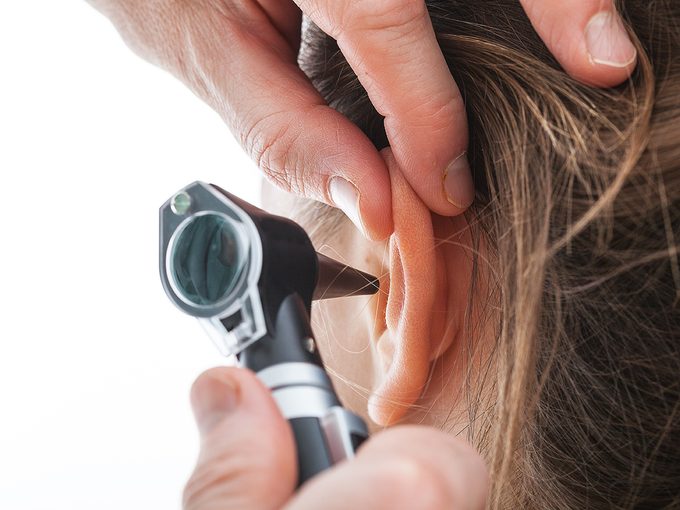What Your Earwax Says About Your Health

It turns out the colour, consistency and even the odour of your earwax are giving you vital clues about your health and well-being.
It’s a little gross, but you can learn a lot about your body by taking a look at what it produces. The colour, smell and consistency of your urine, poop, saliva and mucus all reveal secrets of your health—and the same can be said about your earwax.
Earwax, also known as cerumen, is produced by our bodies with the primary function of protecting our ears, says Rex Banks, a doctor of audiology and the director of audiology at the Canadian Hearing Services. This protection comes in the form of moisturization, preventing dryness in the ear canal, as well as fighting off infection with its antibacterial properties, Banks explains. What’s more, earwax acts as a barrier between your inner ear and the outside world, providing a layer of defense against dust and insects.
Though your earwax might not be as illuminating as other bodily excrements, it can still provide some unique insights into your health. Read on to learn about what your earwax can reveal about your well-being.
What your earwax colour could mean
Your earwax colour can tell you a lot about what’s going on in your ears. “Earwax is usually light brown, orange or yellow honeycomb in colour,” says Banks. If your earwax colour falls into that general range of shades, that’s normal.
The darker your earwax is, the longer it’s been up there, explains Banks. If your cerumen is dark brown or black, it means a bunch of dust and dirt is likely trapped in your ear. “Black earwax is usually a sign that it’s really old and possibly impacted”—meaning there’s a build-up and maybe a blockage in your ear canal, says Banks.
If you have impacted earwax, see your doctor who will likely lubricate your earwax with oil or a saline solution and try to soak it up with a cotton pad or cloth. If your earwax still isn’t coming out, your doctor might manually remove it with a cerumen spoon, forceps or a suction device.
If you’re noticing red or green streaks in your earwax, it might be a sign that you have an ear infection. Red usually indicates blood (and if it’s wet and runny, you might have a ruptured ear drum) and green might mean there’s pus mixed into your wax, suggesting a serious infection. (Find out more symptoms you should never ignore.)

Dry vs. wet earwax
“We have two main categories of earwax: dry and wet,” says Banks. Whether you have wet or dry earwax might have to do with your heritage—a study in Nature Genetics found that people of Asian descent tend to have dry earwax while people of African or European descent have wet or sticky earwax. This is thanks to the ABCC11 gene, which dictates your earwax type and is also linked to body odour. About 80 to 95 per cent of people of East Asian descent have dry earwax, caused by a mutation in the gene.
Dry, flaky earwax might also be a sign of age. As we get older, our body’s glands (including the ones in our ears that produce earwax) tend to dry out.
Leaky earwax
If you notice that your earwax is leaking out of your ears, it might be a sign of a cholesteatoma—a cyst that grows in your ear and leads to debris filling up your ear canal. Along with pressure and pain in your ear, you might notice your earwax coming out as a notable trickle, rather than the stickier gunk you’re used to.
It has a strong smell
Especially when paired with green or red coloured cerumen, a foul odour can indicate that you have an ear infection, says Banks. Your earwax should have some smell (and that smell is totally unique to you, like a fingerprint), but if it smells terrible, it can be a sign of infection.
Aside from the unpleasant smell, an ear infection might also come with a feeling of fullness in your ear or difficulty hearing. “You could also have a feeling of itchiness in your ear, discharge or odour, or even feel dizzy,” Banks says. “If you’re experiencing any of these things, you may want to go see a health care professional to examine your ears and see what’s going on.”
Next, check out the signs of hearing loss you might be ignoring.






